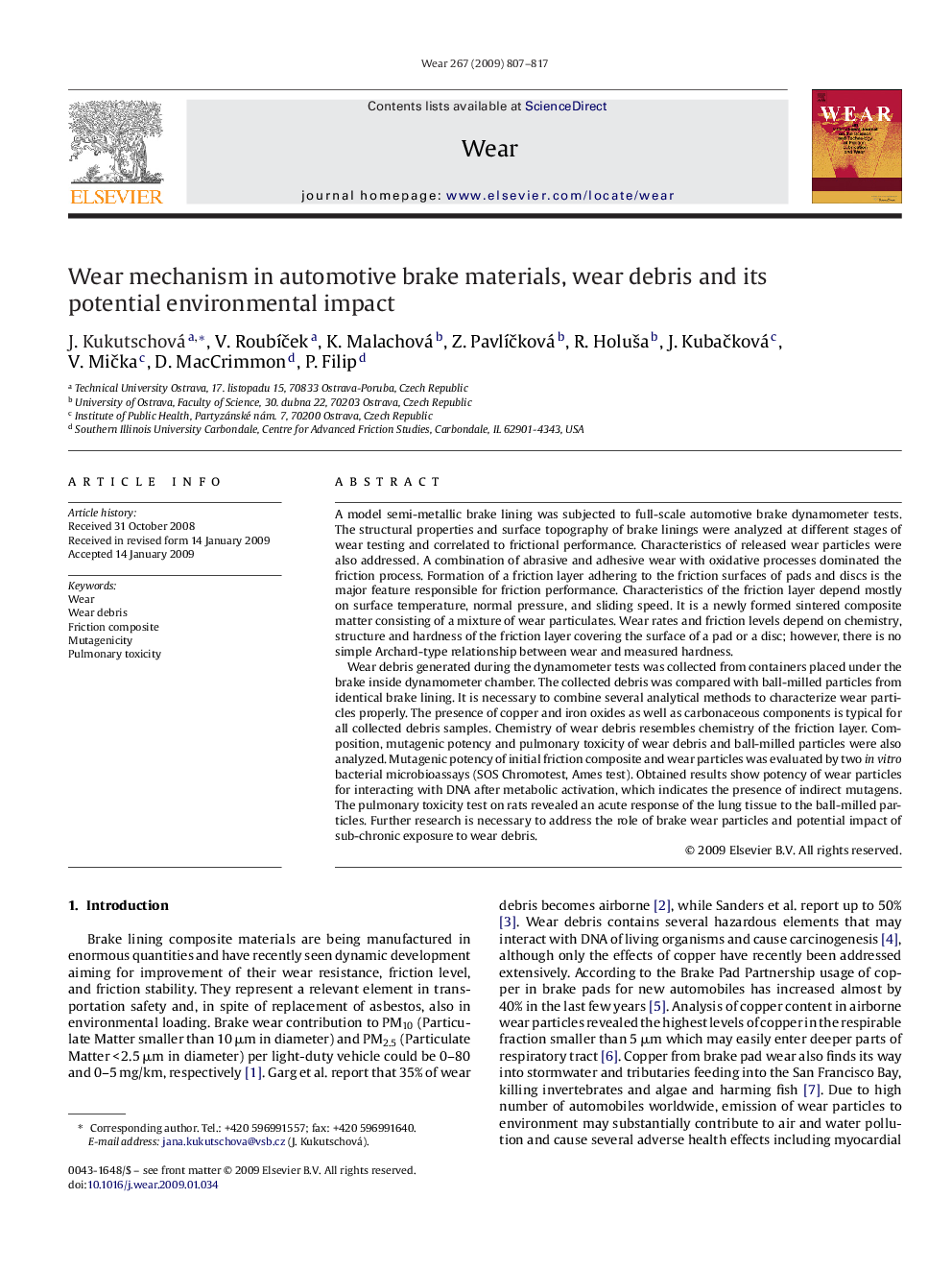| کد مقاله | کد نشریه | سال انتشار | مقاله انگلیسی | نسخه تمام متن |
|---|---|---|---|---|
| 619333 | 1455043 | 2009 | 11 صفحه PDF | دانلود رایگان |

A model semi-metallic brake lining was subjected to full-scale automotive brake dynamometer tests. The structural properties and surface topography of brake linings were analyzed at different stages of wear testing and correlated to frictional performance. Characteristics of released wear particles were also addressed. A combination of abrasive and adhesive wear with oxidative processes dominated the friction process. Formation of a friction layer adhering to the friction surfaces of pads and discs is the major feature responsible for friction performance. Characteristics of the friction layer depend mostly on surface temperature, normal pressure, and sliding speed. It is a newly formed sintered composite matter consisting of a mixture of wear particulates. Wear rates and friction levels depend on chemistry, structure and hardness of the friction layer covering the surface of a pad or a disc; however, there is no simple Archard-type relationship between wear and measured hardness.Wear debris generated during the dynamometer tests was collected from containers placed under the brake inside dynamometer chamber. The collected debris was compared with ball-milled particles from identical brake lining. It is necessary to combine several analytical methods to characterize wear particles properly. The presence of copper and iron oxides as well as carbonaceous components is typical for all collected debris samples. Chemistry of wear debris resembles chemistry of the friction layer. Composition, mutagenic potency and pulmonary toxicity of wear debris and ball-milled particles were also analyzed. Mutagenic potency of initial friction composite and wear particles was evaluated by two in vitro bacterial microbioassays (SOS Chromotest, Ames test). Obtained results show potency of wear particles for interacting with DNA after metabolic activation, which indicates the presence of indirect mutagens. The pulmonary toxicity test on rats revealed an acute response of the lung tissue to the ball-milled particles. Further research is necessary to address the role of brake wear particles and potential impact of sub-chronic exposure to wear debris.
Journal: Wear - Volume 267, Issues 5–8, 15 June 2009, Pages 807–817